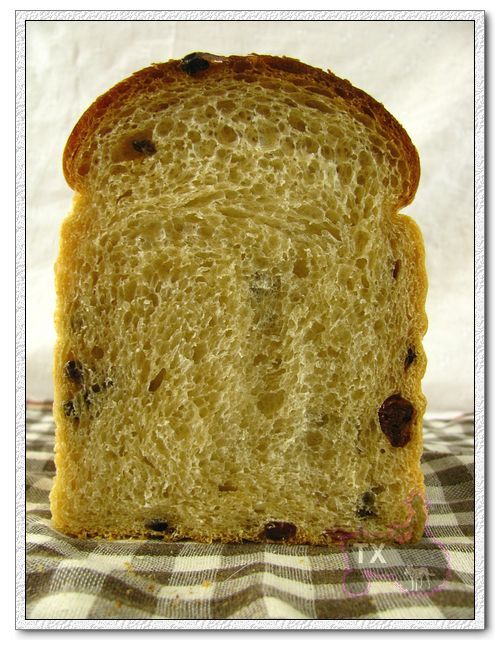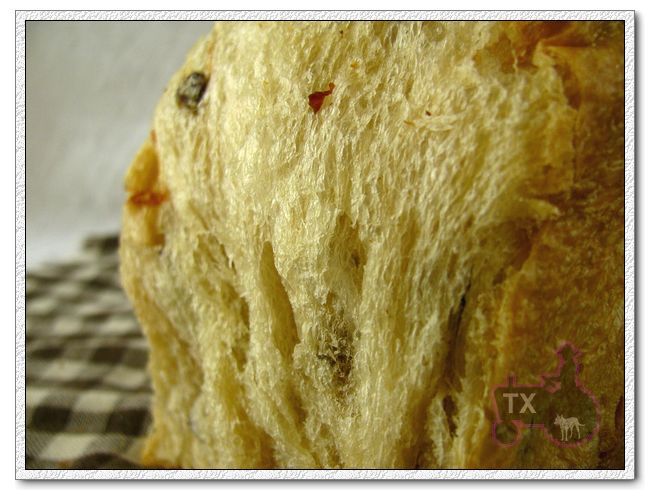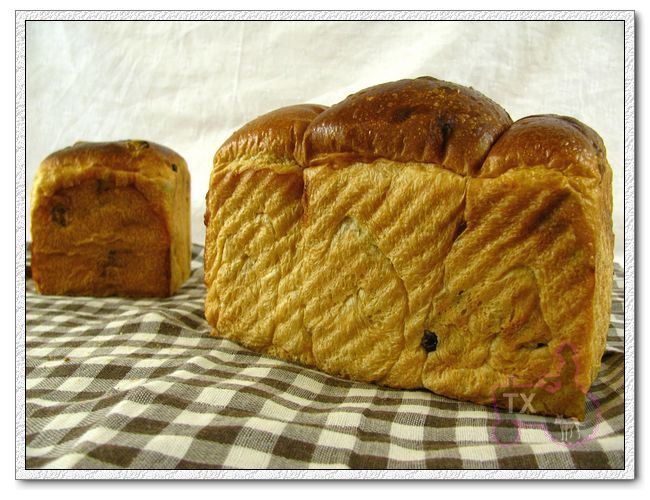
Another recipe from "A Handmade Loaf", using the beer barm starter. Anyone who knows of traditional English barm cake, or have seen the picture of this bread in the book might object and say: hey, what's in this picture?! It's not a barm cake, it's two sandwich loaves! Well, trust me it's the same recipe, just done differently.
Here I have to digress and talk a bit about Asian syle breads - sometimes in the form of a loaf, more often in the form of a stuffed bun. Very soft crumb with small pores, "shred-able", easier to peel off pieces than cutting it. It's essentially a slightly enriched dough (often with egg, butter, sugar, milk powder, milk, cream in the dough, but in small amounts), and the key to the soft and slightly spongy texture is in the kneading and shaping. The dough is VERY WELL kneaded to complete gluten developement, so that the bread gets maximum volume and a very fine crumb, which translate to a soft texture. During shaping, the dough is roll out thin, then roll up like a jellyroll TWICE before loading into the pan, this is to ensure the finest possible crumb - with the smallest possible pores. While artisan bakers here obsess over big holes in baguette, Asian bakers invest in the same effort and techniques to achieve even crumb with absolutely NO holes. It's sort of like a Pan De Mie bread, but much lighter. For the same pullman pan I bought from KAF (4X4X13inch), KAF Pan De Mie formula asks for 40oz (1100g+) of flour, while my Asian recipe only needs 800g, you can imagine how the bread is much lighter.
This kind of soft breads are what most Chinese people like, and I started out liking and making them 2 years ago. Soon after that, I got into sourdough and other Eureopean style breads, my taste evolved. I still like Asian style breads, but want the flavor to be a bit more layered and complex. As the result I have been trying to make these Asian style soft breads with pure sourdough, which add a tangy aftertaste in addition to the soft and slightly rich flavor. I am still perfecting the process in terms of how long to fermentate, how long to proof etc, but so far so good, I really like how the breads are more flavorful, yet still soft, tall, and spongy, the best of both worlds. (I will post when I am settled on the "best" procedure.) Some may ask why these soft breads are better than supermarket wonder bread, answers are: more flavor, soft but still has body (not squishy), slightly chewy.
When I see this barm cake recipe in the book, I wanted to keep the ingredients the same, but change the techinque to make it into Asian style sandwich loaves - tall and soft, rather than dense and cake-like. Nothing wrong with the latter, just not what we wanted at the time. Only two concerns: 1)the barm stater has been in the fridge for 5 days at that point, was it still strong enough to raise a loaf to 4+ times of it's original size? 2)the butter (15%) and sugar (15%) ratioes are both slightly higher than my normal Asian sandwich formulas. I was especially worried about the sugar, at 15%, it's on the verge of being "too much" for a natural starter. However in the end, it all worked out, the dough rose just fine, and I got two very soft, very tall, very flavorful loaves. Nothing like an English barm cake, more like a light Asian chiffon cake.
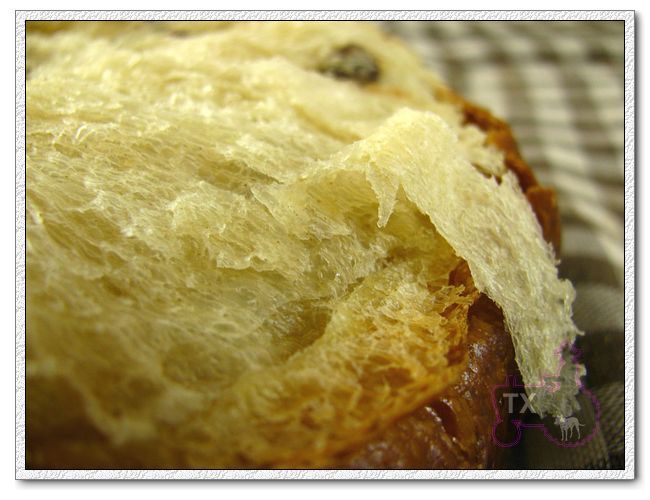
fruited barm loaf (adapted from "A handmade loaf")
Note: the following formula is suitable for a standard US 8*4inch loaf pan, but I used a Chinese loaf pan that's narrower and taller. I also had more than 64g of barm starter, so I infact made more dough than specified below, that's why you see a large loaf and a small loaf in the top picture.
beer barm starter, 64g
water, 106g,
bread flour, 212g (I used KAF bread flour)
AP flour, 38g
egg, 47g
brown sugar, 38g
zest from one orange
salt, 5g
butter, 38g, softened
currants, 39g
golden raisin, 39g (I used half dried cherries and dried cranberries instead)
1. mix water, starter, flour, egg, sugar, zest, autolyse for 30min
2. add salt, knead until gluten is well developed, add butter in 3 batches, until you get a very thin and strong windowpane. The stronger the gluten network, the higher the bread, but be careful not to overknead, it's a fine line. this is a VERY wet dough, even before adding the butter. It never did completely cleared the bottom of the mixing bowl, even though it's kneaded until very elastic.

3. bulk rise for 4 hours until well expanded, almost double.
4. for my narrow and long loaf pan, I divide the dough into 3 portions, for a 8*4 loaf pan, divide into two. for each dough round and rest for 30min. then, pat/roll each one out into a long ovel/rectangle, roll up from the narrow end like a jelly roll, keep the surface tension tight, press out all bubbles.Now you have 3(or 2) cyclinder like below:
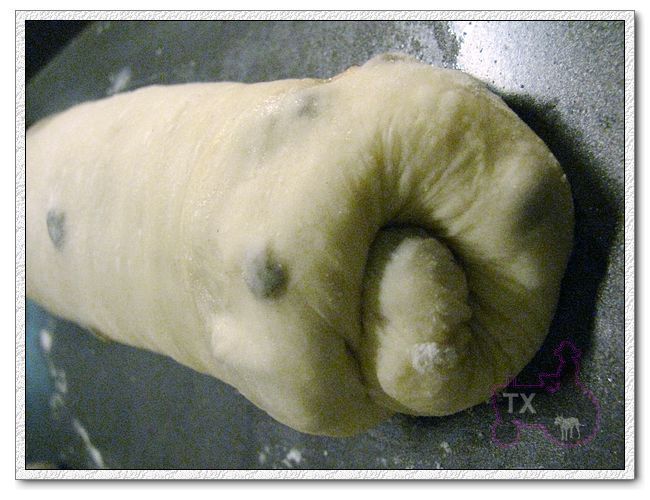
rest for 15min, rull out each cylinder along the long axis into a flat long oval, smooth side down, press out all air bubbles
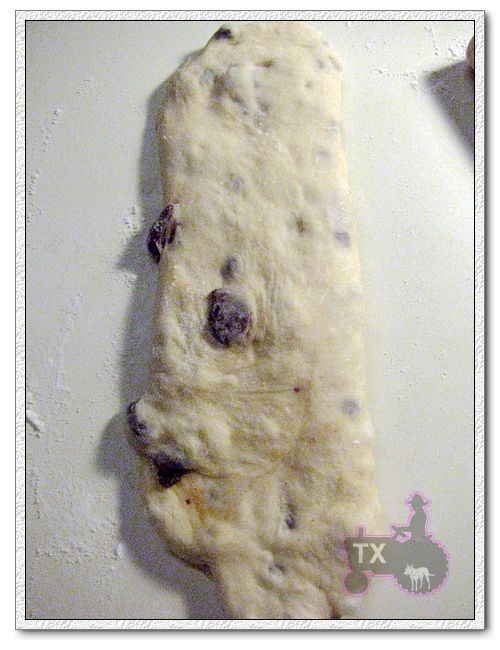
roll up from the narrow end again, press the seam tight with each roll, keep surface tension tight, load them seam side down into loaf pan. As you can see they only fill the pan 1/4 to 1/3 full, seems impossible to fill the pan, but don't worry.
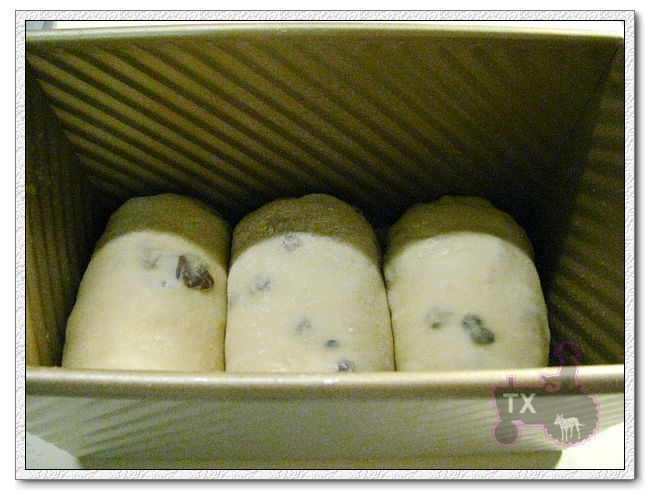
5. proof until it's 80 to 90% full, for me , it took 6 hours, pretty normal for this kind of doug. Note that the height of each roll is uneven, this is because the dough was very wet, and I didn't keep the tightness the same for each roll. Ideally they should be all at the same height.

6. brush with egg wash and bake at 400f for 15min, 350 for 30min, tent with foil for the last 15 so the top doesn't get too dark. unmold immediately after bake, cool on rack. The loaves are so soft I was afraid to touch them, but no fear, they are infact baked through.

This kind of soft bread is great as a snack, or smeared with some PB and J, or just pulled off piece by piece and eaten plain like we did. We often think of sourdough breads as the crusty lean loaves (which I love too), but sourdough is just a method to raise the dough, it can make any type of bread, including enriched ones. This bread is like the sourdough pandoro and sourdough challah I made before, rich and tangy.
